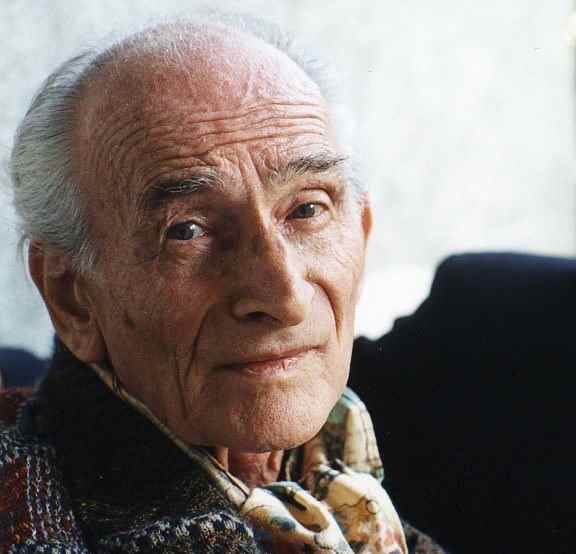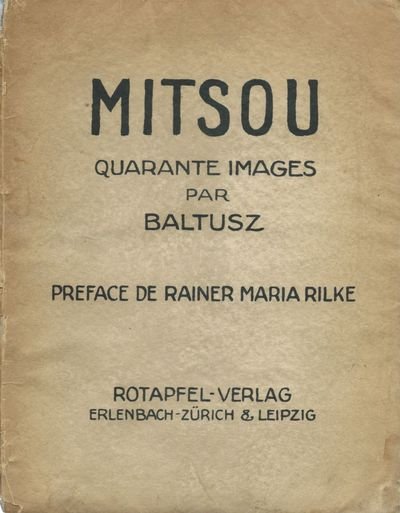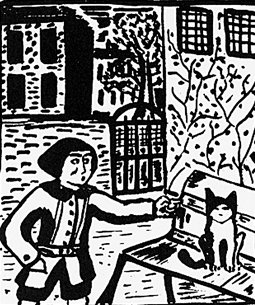
In my next few blogs, I am looking at the life and art of the French born painter Balthasar Klossowski de Rola, more simply known as Balthus. Some of his artwork shocked the world and I have to warn you that some of his paintings you may find disturbing, and have often been termed offensive and disgusting. These will appear in Part 2.
So what do we know about Balthus’ life? The answer is “very little” and that is exactly how the artist wanted it to be. As far as his life story was concerned, he wanted to preserve his anonymity, so much so, when negotiating with the Tate Modern, which was about to launch a retrospective of his work in 1968, he sent the curator of the exhibition a telegram which read:
“..NO BIOGRAPHICAL DETAILS. BEGIN: BALTHUS IS A PAINTER OF WHOM NOTHING IS KNOWN. NOW LET US LOOK AT THE PICTURES. REGARDS. B…”
Balthus was born in Paris at the end of February 1908. His father Erich Klossowski was a noted German historian and painter, who had come from a family which belonged to Polish nobility, and whose coat of arms was known as the Rola, which was used by a number of szlachta families. The szlachta was a legally institutional privileged noble class and Balthus added the title “de Rola” to his name. Balthus’ mother was Elisabeth Dorothea Spiro, but as a painter, used the name Baladine Klossowska. She gave birth to two sons, Pierre in 1905 and Balthus in 1908. Pierre went on to become a much heralded writer and philosopher. Balthus and his family lived in rue Boissonade in Paris’ 14th arrondissement. He and his brother had a privileged upbringing as his parents were part of the cultural elite in Paris and would entertain many of the cultural icons of the time such as the French writer and playwright, Jean Cocteau, André Gide, the Nobel prizewinning writer, and the French painter, Pierre Bonnard. The family, who held German citizenship, along with Balthus’ uncle, the painter, Eugen Spiro, had to move out of Paris at the onset of World War I and they travelled to Berlin where Balthus’ father worked at the Lessing theatre as a stage and costume designer.
In 1917, Balthus’ mother and father separated and she took her sons, Pierre and Balthus, away from Berlin and set up home in Berne. Later she and her two sons move to Conches, a small town just south of Geneva, and stayed with friends before renting a two-room apartment in rue Pré-Jerôme in 1920. Balthus, as a child loved to draw and it was in 1919, whilst living in Conches, that, at the age of eleven, he produced a book of forty graphite and ink drawings. The drawings were based on the experiences he had, when he fell in love with a stray cat which he called Mitsou and through his drawings he tells of his happiness derived from his feline friend and the sadness of losing his new friend. It was in 1919 when Balthus’ mother Elisabeth first met Rainer Maria Rilke in Geneva. He was a writer and poet. They quickly became lovers, a relationship which lasted until he died of leukaemia in December 1926. It was an unusual relationship as Rilke said he needed his own space when he worked and so the couple did not live together on a permanent basis.

On one of Rilke’s visits to the Klossowski home to see Elizabeth he saw the Mitsou drawings done by her son, Balthus, and was he was so impressed by them that he offered to write the preface for the book and arranged for it to be printed in 1921 under the title Mitsou, Quarante images (Mitsou, Forty Images). The set of forty drawings were an animated tale of how he found a cat on a park bench.

In the opening drawing of the set we see the boy tentatively leaning towards the cat making sure he doesn’t scare it off. Look how Balthus has given the boy an air of astonishment as he looks at the cat, by shaping the mouth, raising the thick eyebrows and the angling the chin. In complete contrast, the cat looks out at us in a statuesque sphinx-like way, totally unfazed by the boy’s approach. Although the story is about him and the cat, Balthus has added other elements to the drawing. The setting is a courtyard which is separated from a house by a wall and a gate. He has also included vines climbing up the wall as a backdrop.

From this time on, Balthus love of cats was shown by the number of times he depicted felines in his artwork. Drawing number 40 of Mitsou, the last one of the set, depicts Balthus crying when he realises the cat has run off and his feline friend has gone forever.
In the summer of 1919 the family spend time in the picturesque Swiss village of Beatenberg which lies between the Bernese Alps and the still blue waters of Lake Thun. It is whilst here that Balthus works as an assistant to the painter, Margrit Bey. For next four summers Balthus and his family would return to Beatenberg and work alongside Margrit. Between 1919 and 1921, during their stay in Conches both Balthus and his brother study at the College Calvin in Geneva. For Balthus, the years between 1919 and 1921 were some of the best times he ever had and he was always pleased to recall those days

His mother was in love with Rilke and he was devoted to her. Balthus also bonded with Rilke and he received nothing but compliments for his artwork from the writer. To Balthus, Rilke was almost a surrogate father.
In April 1921 Baladine and her two sons move back to Berlin and go to live with her brother Eugen and later stay with her sister, Gina Trebicky. Elisabeth had some of her paintings accepted for an exhibition of female artists at Galerie Fleckhtheim in Berlin and it is at this time that she is persuaded to change her name as an artist to Baladine.
In 1934, Balthus produced his first large scale painting entitled The Street. It measured 195 x 240cm (77 x 94 ins). He had already painted another version of this five years earlier, just before he journeyed to Morocco but some of the characters had changed. The setting in both works is the rue Bourbon-le Château.

In this earlier version, seen above in black and white, we see a grandfather figure in top hat and topcoat holding firmly onto two young children as they cross the road. The boy, in shorts, wears a hat with a pom-pom whilst the young girl dressed in a skirt and flowered hat. In the later version this trio has been replaced by two other characters, which caused the outrage!

The 1934 version was one of a number of his works of the time which shocked the audience at Balthus’ first solo exhibition which was held in the Galerie Pierre in Paris. The people in the street seemed to have stopped and are frozen in mid-flow, almost trance-like. For this work Balthus retained the baker, the workman crossing the road with a plank of wood on his shoulder along with the woman carrying a young child, albeit now looking like a little man. In this version we also have a young girl, racquet in hand, chasing a ball across the street. Again although possessing the height of a child she seems to be more like a small woman. Balthus was questioned about that but he simply refused to elaborate more than saying “she is simply a little girl”. The same boy, as seen in the first version, is still strolling haughtily towards us but is set back slightly in comparison to the first version. However the major change is the inclusion of the two figures in the left foreground. These two replace the elderly gentleman and the two young children. The man tries to grope the girl as she passes him by and she raises her arm maybe in shock or maybe to strike her assailant.
Pierre Loeb the owner of Galerie Pierre said that having looked at the painting described it as a scene of anguished phantoms sleepwalking in a strange dreamlike state. Balthus believed Loeb’s comments were nonsensical and although Loeb exhibited Balthus’ art in his gallery bringing him to the notice of the public, Balthus loathed him and termed him a “typical outsider who lacked true vision of what really mattered to painters”.
The painting was bought from Galerie Pierre in 1937 by James Thrall Soby, an American author, critic and patron of the arts. However the painting was so controversial and so many of his friends disliked the sexual connotation that Soby wrote to Balthus in 1955 and asked him to retouch the gesture of the figures on the left. Soby was surprised when Balthus agreed and wrote:
“…I used to like shocking people, but now it bores me…”
When Soby died in 1979 this painting was bequeathed to the Museum of Modern Art in New York.

I am concluding this first part of my look at the life and art of Balthazar Klossowski by showing you the painting, the title of which the artist gave himself. This is just one of three self portraits completed by Balthus. The title of the 1935 painting was King of the Cats. Balthus was twenty-seven years of age when he painted this work. It was painted in his Paris studio in rue Furstenberg. The studio, which he bought in May 1933 was a fifth floor attic room It was also the first property he ever purchased and he remained here until October 1935.
Balthus had always had a love of cats and in this work we see him standing in a somewhat arrogant and aloof pose, with his beloved cat lovingly rubbing itself against his leg. Because the view of the artist is seen from below it elongates him and adds to his imperious stance. He is dressed in saffron pants, white shirt and red tie and a black jacket. On his feet is a pair of pointed black shoes. On the floor, to his left, is a stone slab leaning against a high stool with the inscription:
A PORTRAIT OF
H.M.
THE KING OF THE CATS
Painted by
HIMSELF
MCMXXXV
Balthus has added a little humour to the painting by placing a lion tamer’s whip on top of the stool !
It was in that year that Balthus started to sign his letters “King of the Cats”, the first being a letter, written in January 1935, to his soon to be wife, Antoinette de Watteville.
There is an air of self confidence about the figure and this has been put down to 1935 being a good year for him after the turbulent times of 1934 when his first one-man exhibition at the Galerie Pierre, featuring many depictions of pre-teen girls in erotic poses, scandalised the critics and public alike. The fall out over these paintings made Balthus give up painting for almost a year.
In the second part of my look at Balthus I will focus on the paintings which caused such a furore when exhibited in Galerie Pierre in Paris.
Besides information about Balthus and his art gleaned from the internet I have relied heavily on two excellent books which I can highly recommend.

First there is the book Balthus Cats and Girls by the foremost expert on Balthus, Sabine Rewald.
Secondly, a very thick tome by Nicholas Fox Weber entitled Balthus, A Biography.

I have always loved his work which seems to have the ability to draw me in, with great force,into his world. Perhaps the fact I too am a cat lover has something to do with it. It saddens me his work isn’t better known.
Fascinating. Thank you for this